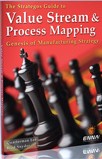Introduction
 Action
learning promotes
individual and organizational learning
through small teams. These teams address real problems and learn from their attempts to change
things. Action
learning promotes
individual and organizational learning
through small teams. These teams address real problems and learn from their attempts to change
things.
The most important aspect of Action Learning is its ability to promote
cultural change. The surface simplicity of Action Learning can
mask its real power. It not only provides learning for individuals and the organization. It also
solves intractable problems and generates significant changes in corporate culture.
Action Learning shares many characteristics with Kaizen events and process improvement teams.
Indeed, some process improvement teams or Kaizen teams are, in fact, Action Learning teams.
Figure 1 shows the general process. Click here for
a comparison of Action Learning, Kaizen and Task Forces.
Benefits
The benefits of Action Learning come at two levels. At an individual level, people learn
through doing. They learn about technical issues such as workcell design. They learn about team
processes and how to function in teams. They also learn leadership and cooperation skills.
Action Learning gives team members confidence in their abilities to learn while promoting an
appropriate humility about their actual knowledge.
At the organizational level, companies need to learn coping skills for new problems. The rate
of change in the external environment is accelerating and has been for several decades. It is
only likely to accelerate more.
For survival, organizations must learn at least as fast as the pace of change and, preferably
faster. they must become learning organizations or lose
competitive advantage.
Existing knowledge about how things work, or are supposed to work, often misdirects inquiry
rather than facilitates a solution.
Action Learning promotes the kind of Corporate Culture that allows companies to survive in
these changing environments.

|

Figure 1 the Action Learning Process
|
 
Origins of Action Learning
 The
term “Action Learning” was first coined by Professor Reg Revans. Originally an
astrophysicist, Revans later worked on productivity improvements in British coal mines. He experimented, developed, researched and wrote about Action Learning
for almost 50 years. The concept is better known in Europe than in the U.S. The
term “Action Learning” was first coined by Professor Reg Revans. Originally an
astrophysicist, Revans later worked on productivity improvements in British coal mines. He experimented, developed, researched and wrote about Action Learning
for almost 50 years. The concept is better known in Europe than in the U.S.
Action Learning drew upon
many older tools from Work Simplification and the work of Gilbreth, Taylor and the other
Industrial Engineering pioneers. At the same time, it anticipated many of the techniques
of Team Development that came later such as self-norming and conflict resolution.
 
|
|





